There is nothing quite like getting a hole off to a great start with a powerful and accurate drive. While you certainly need to do plenty of other things well in order to post good scores, having the ability to drive the ball well is a big first step. Playing from the fairway for most of the day makes the game much easier, both in terms of the shots that you face and the stress that you have to deal with during the round. If you are serious about making significant improvements in your game, there is a good chance you are going to need to take a step forward in your performance with the driver.
With that in mind, this article is going to offer up 10 of the top driver tips that have ever been offered in the game of golf. As you read through the list of tips below, think about your own driver performance to determine whether or not you could personally benefit from each tip. Some of these tips are sure to hit home for you, while others might not necessarily relate to your needs. In the end, you should be left with at least a few different ideas of how you can improve your driving going forward.
All of the content below is based on a right handed golfer. If you happen to play left handed, please take a moment to reverse the directions as necessary.
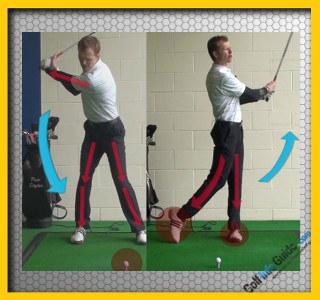
It is easy to understand the temptation to swing at full power when hitting a driver from the tee. After all, the driver is a club that is built with distance is mind, so it is only natural to ‘cut it loose’ in an effort to hit the ball as far down the fairway as possible. However, if you don’t actually find the fairway with those aggressive swings, you aren’t going to be doing yourself any favors. Long drives are only useful in this game when they are accurate, which is why it is usually a good idea to swing at something less than 100% effort when hitting the driver.
Most players think they are going to lose significant distance when they swing their driver at less than 100%, but that simply isn’t the case. Backing off by a bit when it comes to the effort that you put into your driver swing is unlikely to cost you many yards at all. In fact, it is possible that you will even gain a few yards on your average drive, thanks to the improved quality of contact that you will be achieving at impact. Hitting the ball on the sweet spot is crucial when trying to maximize distance, and it is easier to hit the sweet spot when you aren’t swinging flat out.
While it is a smart decision to swing at something less than 100% with your driver, you certainly don’t want to be swinging ‘soft’ either. You still want to make an aggressive, confident golf swing that has the club head accelerating nicely through the ball. If you were to try to assign a percentage of effort to the ideal driver swing, it would be pegged at somewhere between 80% – 90%. That level of effort will make it easier to keep your balance and hit the sweet spot, yet you will still have enough speed to send the ball a significant distance down the fairway.
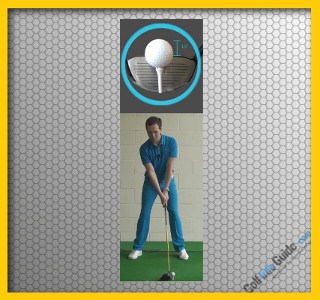
Assuming you are using a modern driver with a 460cc head, you need to tee the ball high in order to actually find the sweet spot at impact. With most drivers, the sweet spot is going to be found somewhere slightly above the mid-point on the face of the club. With that in mind, if you fail to tee the ball high enough at address, you will have no chance to actually catch the sweet spot – even if you make a perfect swing.
As a good rule of thumb, you want to tee the ball up at a height that will place the ball halfway above the top of the driver at address. Put another way, the middle of the golf ball should line up with the top line of your driver when you ground the club prior to starting your swing. If you are used to playing with a low tee height, this setup might look a little odd to you at first. Give it a try, however, as using this tee height will make it possible to achieve consistently powerful drives.
Not only do you want to tee the ball high in order to give yourself access to the sweet spot, but you always want to promote an upward hit through impact. Your driver is the opposite of your irons, as you want to hit up on the ball slightly as opposed to down. By placing the ball forward in your stance and teeing the ball up at an appropriate height, you will be able to catch the ball on the upswing as you head through the hitting area. This technique should take some of the backspin off of your drives, allowing you to achieve a beautiful trajectory that maximizes distance.

#3 – Take Your Time at the Top
When you stand over the ball on the tee with your driver in hand, you are likely excited and anxious to blast one long down the fairway. You have to be careful with that excitement, however, as hitting a shot while excited can cause you to rush the golf swing. You need to take your time at the top of the swing if you are going to strike the ball properly at the bottom, so don't let your anxiousness get the best of you.
To avoid rushing through your driver swing, one of the best things you can do is to take a couple of deep breaths to calm yourself down prior to the shot. Stand behind the ball, look out toward the target, and take a couple of slow, deep breaths. Once you have calmed yourself down, walk up to the ball and take your stance properly. With your stance taken, start your swing in short order so you don't have time to return to an anxious state.
Even if you do a good job of calming yourself down before your drives, you are still likely to get carried away from time to time. This is nothing to be ashamed of, as it happens to everyone on the course occasionally. When that does happen, the best thing you can do is to take note of it, remind yourself of the importance of being patient in your swing, and then do your best to avoid rushing through the next shot.

This one might seem a bit strange, but one of the best driver tips you can receive is the notion that you should leave this club in the bag from time to time. Sure, you will want to hit your driver on a great number of the par four and par five holes that you play, but some of those holes are going to be better handled with the use of a shorter club. When the course in front of you demands accuracy rather than sheer distance, consider putting the driver away and reach for a fairway wood, hybrid, or long iron instead.
To make this decision, think about the hole in reverse. As you are standing on the tee, take a look down the fairway and decide where you would like to be for your approach shot. At the same time, take note of any hazards or other obstacles that may be in the way of putting your ball in that spot. This is where the concept of risk vs reward comes into the equation. Is the reward of setting up a shorter approach by using your driver worth the risk that the driver brings into play? Think about this question and decide for yourself on each hole.
It may take some time to develop your own playing strategy when it comes to club selection on the tee. Some golfers like to play more aggressively, while others place a premium on keeping the ball in play at all costs. Both of these strategies can lead to great scores, but you need to identify the one that is going to be effective for you. If necessary, you can play a few 'test rounds' with various tee shot strategies until you settle on a mix of aggressiveness and caution that feels right for your game.
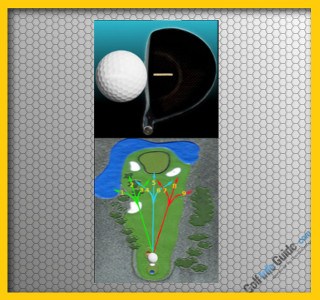
#5 – Develop a Go-To Ball Flight
Many golfers fall in love with the idea of being able to work the ball in both directions off the tee. The idea, of course, is a good one – if you can hit both a cut and a draw on command, you can handle a wider-variety of holes with ease. However, this is an extremely difficult skill to master, so it is one that you would be wise to leave alone. Rather than trying to master two different shots with your driver, stick with one that you trust and use it hole after hole.
You may be surprised to learn that most professional golfers only turn the ball in one direction when hitting their driver. Sure, they could alter that ball flight if necessary, but most prefer to stick with the shot that they know and trust. Top level players are far more likely to vary the shape of their shots with irons than they are when swinging the driver. You should take your lead from those who play the game for a living. Rather than trying to carve your driver all over the course, stick with one flight and spend your practice time learning how to hit different kinds of shots with your irons.
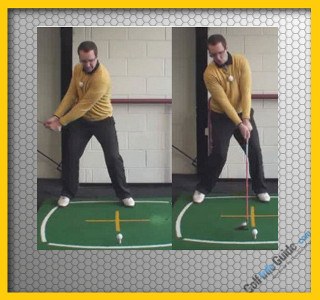
For most golfers, the best way to swing irons is in a 'vertical' manner – the club traces a relatively steep path on the way back, and then comes back down steeply into the ball. This is ideal for iron shots because you want to hit down on the ball at impact in order to place backspin on your shots. There is little doubt that this is the best way for most golfers to swing their irons, it is also true that this method is less-than-ideal when holding a driver.
With the driver, you want to round out your swing plane so that the club travels on a much flatter path both back and through. To do this, focus on turning your shoulders on a relatively flat plane as you make your backswing. Instead of allowing your left shoulder to move down toward the turf going back, keep it up and turn it just barely under your chin. You don't want to hit down on your driver anyway, so there is simply no need for the kind of steep backswing and downswing that marks most iron shots.

Most golfers start the process of looking for a new driver by finding the club head that they are going to want to add to their bag. You may have a favorite manufacturer, for example, so you might decide to simply pick up their new driver when it hits the market. However, the club head is not actually the most important piece of the puzzle when it comes to your driver, as the shaft of the club will have a far bigger impact on the shots that you hit.
In order to locate the right shaft to use in your driver, the best thing you can do is head to your local golf shop or course for a professional club fitting. Most golf facilities today have club fitters on staff – usually one of the club professionals – who will be happy to help you find the right shaft for a small fee. Instead of guessing as to which shaft is going to fit your swing best, enlist the help of a pro and make sure you get it right.
While most facilities do charge for this service, you might be able to have that fee refunded if you go ahead and purchase a new club from the business. Even if you pay for the fitting and then buy clubs elsewhere, the investment in a fitting session will pay off down the line as you enjoy the benefits of having the perfect driver in your hands for years to come.
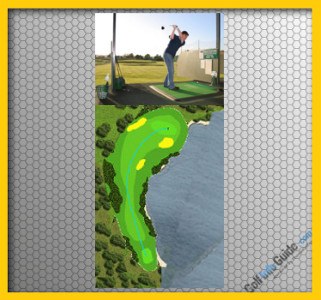
When you are standing on the tee preparing to hit your driver, you can select any spot within the tee markers to actually place your ball before starting the hole. This is the only time in golf when you get to decide where the ball is going to be placed, so make sure to take advantage of this opportunity. Look down the fairway, select a target spot, and then place your ball within the teeing area specifically to give yourself the best angle available. Usually, you are going to want to place the ball on the opposite side from where your target can be found. For instance, if you are going to attempt to hit the ball down the left side of the fairway, you will probably want to use the right side of the teeing ground.
Picking out the right angle might seem like a small point, but it can actually open up the target quite nicely. You don't want to miss out on any possible advantage on the golf course, no matter how subtle it may be, so be sure to always think about angles when you push your tee into the ground. This is a point that applies with the driver, but it also applies with other clubs that you use from the tee – even on a par three.
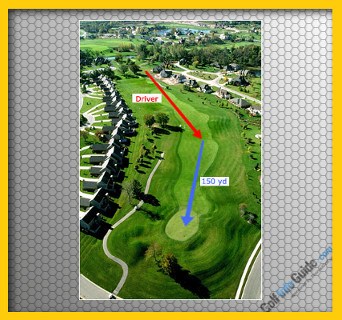
#9 – Don't Fall Into a Competition
One of the common mistakes that is made by many golfers with the driver is falling into a long-driving competition while out trying to play a round of golf. This problem can start up seemingly out of nowhere – you may see your playing partner hit a great drive, so you step up to your shot thinking more about sheer distance rather than accuracy and control. Suddenly, you hit a poor shot because you are trying to crush the ball, and your game goes downhill from there.
To avoid this issue, you simply need to remain focused on your own game. There are no rewards for who is the longest driver in the group at the end of the day, so set your ego aside and worry only about hitting accurate shots. Even if one of the other players in your group is trying to talk you into reaching back for a little extra, ignore their chatter and just do what you need to do to play your best golf. The best bragging rights come at the end of the day anyway, when you add your score up to the lowest total in the group.
This concept is an important one to understand while standing on the tee with your driver, but it is also important throughout the rest of the course. If you are going to live up to your potential in this game, you need to be able to stubbornly stick with your own game plan no matter what is being done by those around you. A good example of this concept is when others in your group are going for the green in two on a par five. If you have decided that you are going to lay up, don't be swayed by anyone else's choice. Stick with your own plan, execute it perfectly, and be happy with the results in the end.
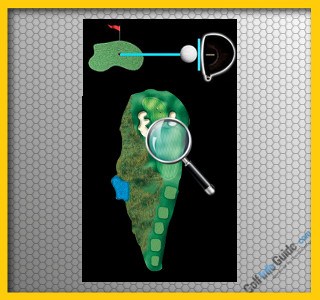
The average golfer does a poor job of picking out a target from the tee when they are getting ready to hit a driver. Instead of deciding on a target that they can use to guide their swing, most players just aim 'down the middle' and hope for the best. Of course, you can do better than that. By picking a very specific target in the distance, you should be able to make a more-focused swing which will be more likely to leave your ball in the fairway.
In addition to the benefits that it has for your swing as a whole, picking a specific target will also help you to position the ball perfectly for your approach shots. While it is true that you want to put the ball in the short grass when you hit a driver, all spots in the fairway are not created equal. Choose a target that is going to set you up with a nice angle into the green, and then do your best to make a swing that places the ball on that target. You are never going to hit your target with 100% consistency, but even hitting those targets a simple majority of the time is going to set you up for many more birdie opportunities.
The driver is one of the most important clubs in your bag, even if it will never be quite as crucial as your putter when it comes to scoring. By hitting solid drives time after time, and by knowing when to keep the driver in the bag, you can make the rest of the game significantly easier. Use the tips listed above to sharpen up your play off the tee, and you should soon find yourself playing from the fairway more frequently. Remember, the driver does not always have to be focused on sheer distance, as hitting accurate drives is much more important than hitting the ball as far as possible on each swing. When you manage to combine solid distance with consistent accuracy, you will be able to play your best golf. Good luck, and keep them in the short grass!






